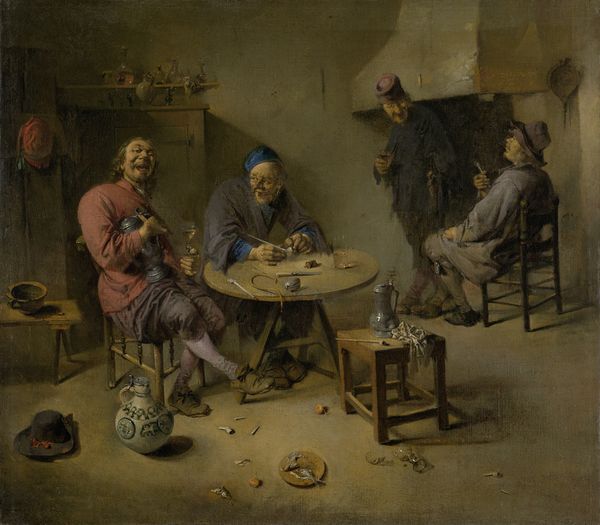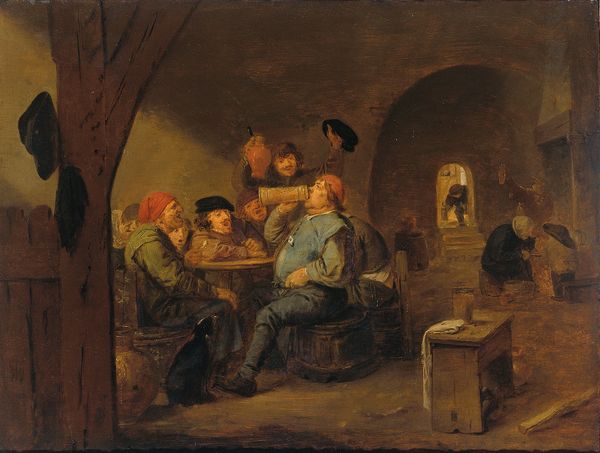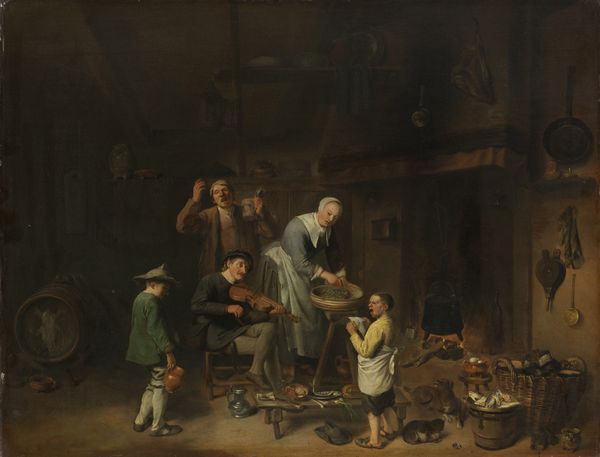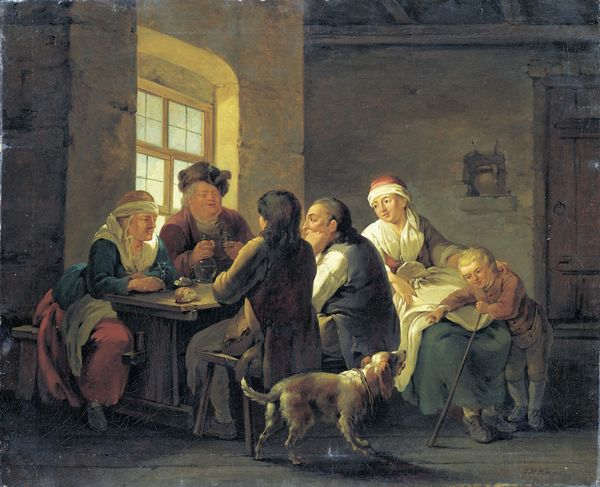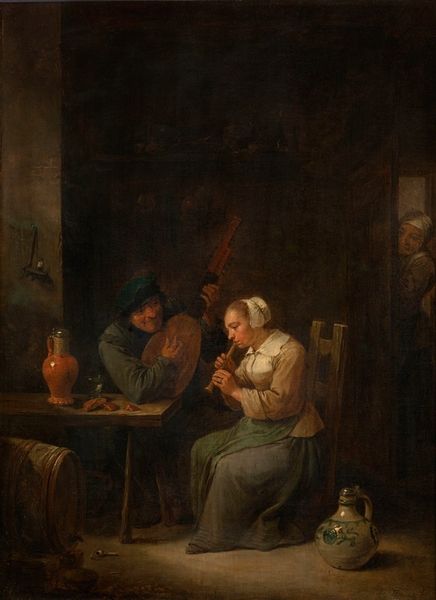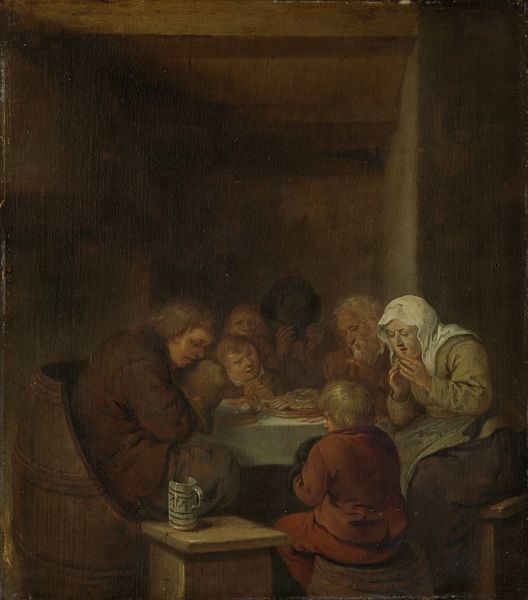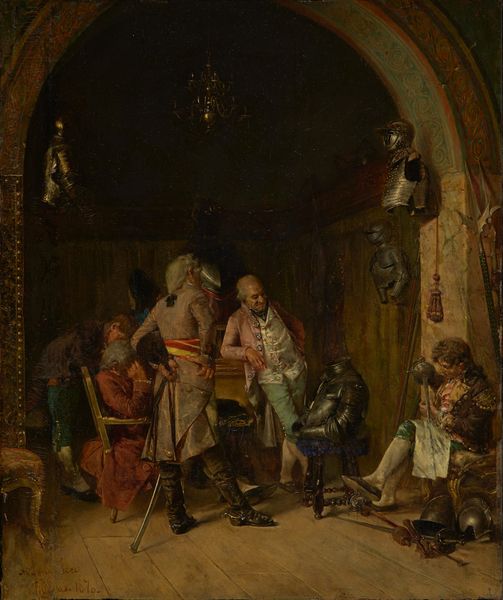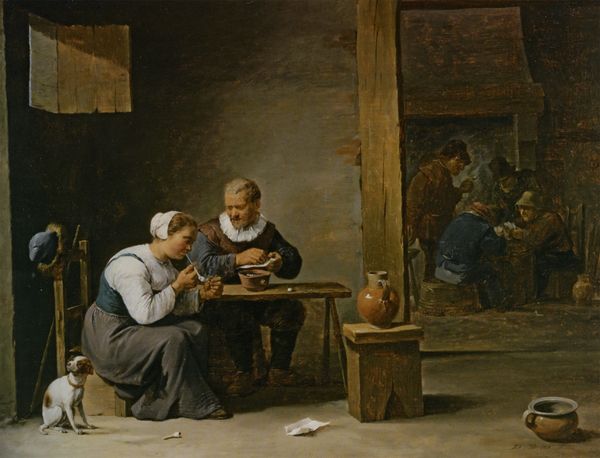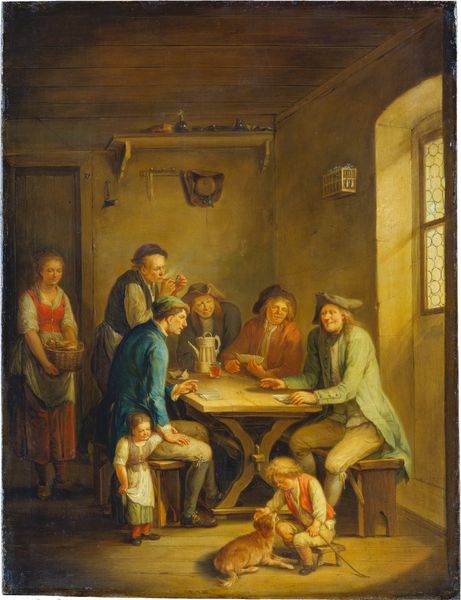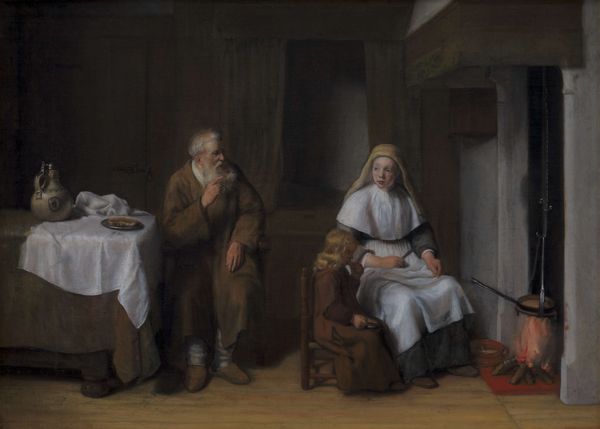
oil-paint
#
portrait
#
baroque
#
dutch-golden-age
#
oil-paint
#
oil painting
#
genre-painting
#
realism
Dimensions: support height 52.1 cm, support height 52.5 cm, support width 68.8 cm, support width 69 cm, outer size depth 7 cm
Copyright: Rijks Museum: Open Domain
Editor: David Ryckaert's "Interior of a Cobbler’s Shop," painted around 1650, is rendered in oil paint. It strikes me as a rather humble scene, a glimpse into everyday life, but something about it feels symbolic. What do you see in this piece? Curator: Ryckaert captures a specific scene, yes, but through the depiction of the cobbler’s trade we glimpse archetypes, perhaps even alchemical symbols. Consider the repetitive acts of creation and repair. What psychological weight do these actions bear? Editor: Alchemy? I hadn’t considered that! It mostly seems like a straightforward depiction of labor. Curator: Look at the tools – the hammer, the awl. They are implements of transformation, much like the tools of an alchemist, working to refine base materials into something precious. And what does the shoe itself represent? A journey? Protection? Status? Editor: Interesting. So, the shoes represent not just something to wear, but potentially the journey an individual takes? What about the people; are they also symbolic? Curator: Observe the faces, the age etched upon them. The older couple, weathered and worn, presiding over this act of creation, contrasted by the figures further in the background, at play, gambling. Don't you sense an implicit question being posed, concerning the passage of time and our purpose within it? Editor: That does change how I see the background figures now. They're not just incidental; they’re highlighting a contrast to the focused work of the cobblers. Curator: Exactly. And that singular light source focuses our eye and thought. The single candle is a metaphor for awareness and focus on duty. Do you think the message is that awareness only stems from such dutiful tasks? Editor: Perhaps Ryckaert believed that honest labor was a path to a deeper understanding of oneself. I still wonder if he idealized the profession by casting the practice with alchemy in mind. Curator: Precisely! Art often holds that tension. It presents reality but asks that the viewer go one step further, unpicking meaning. Now you know a trade is more than just physical but has metaphysical weight.
Comments
No comments
Be the first to comment and join the conversation on the ultimate creative platform.
